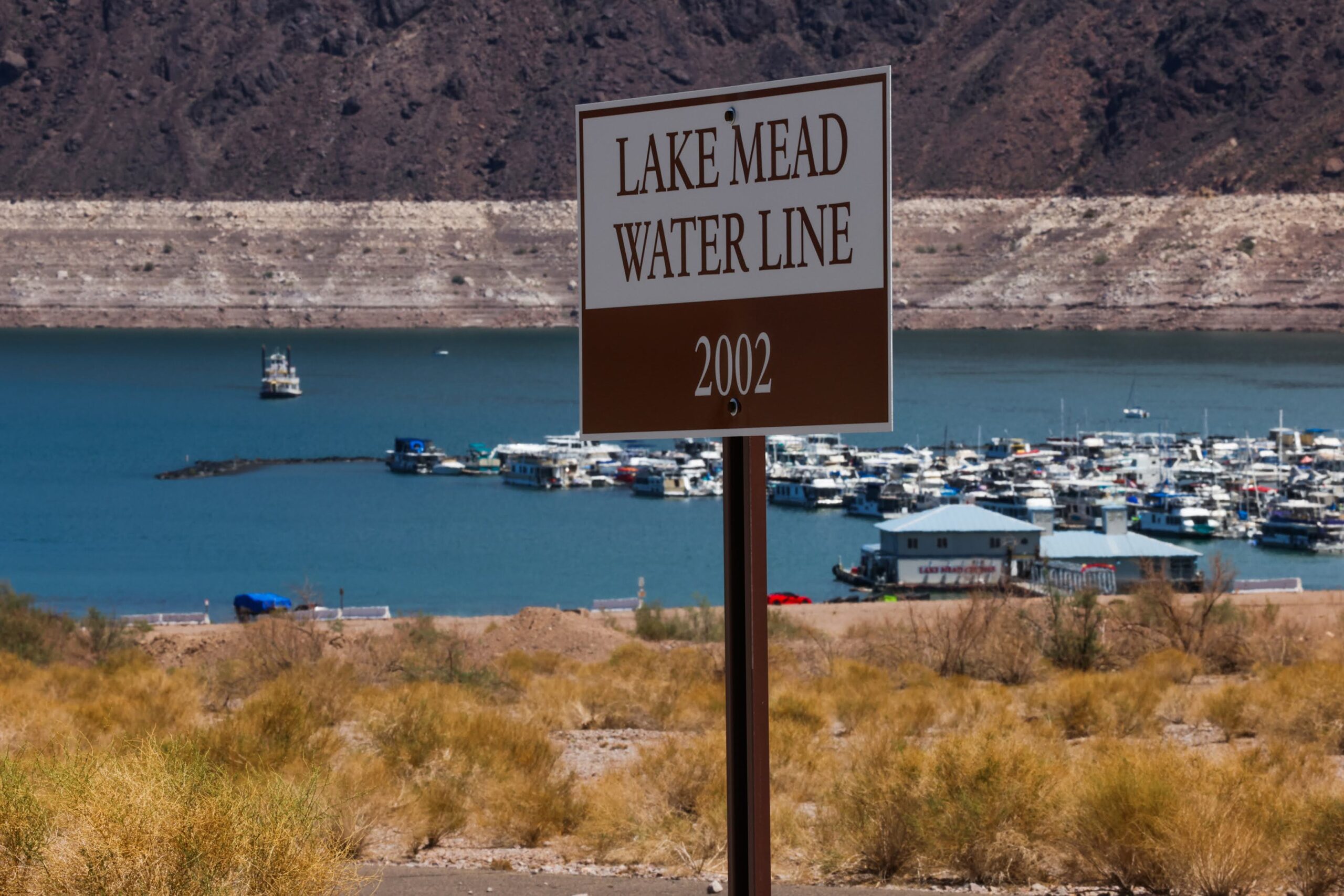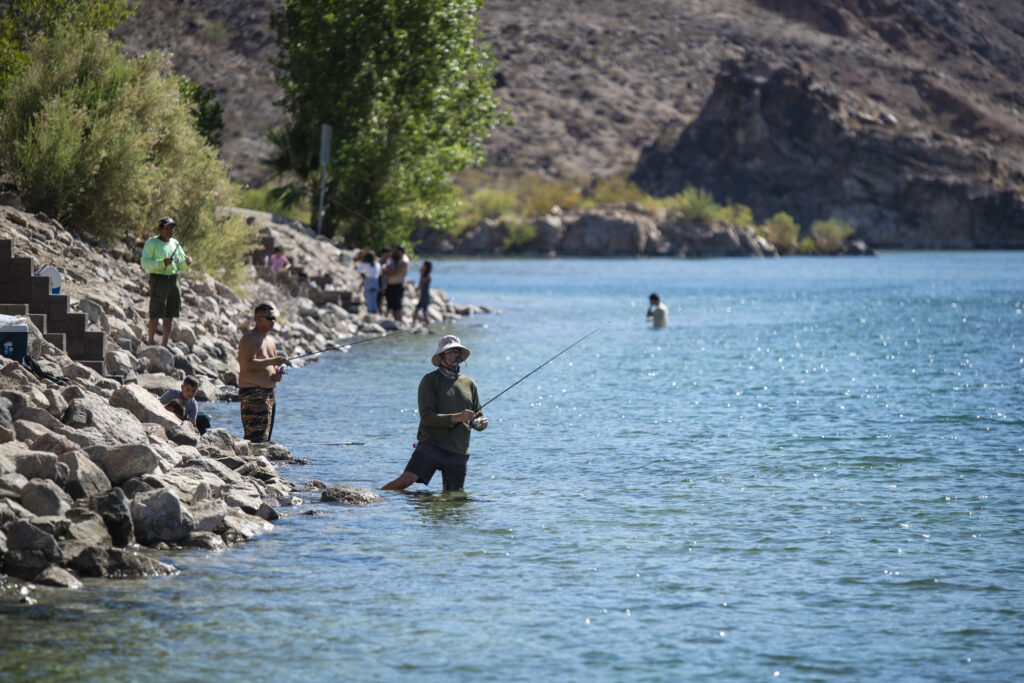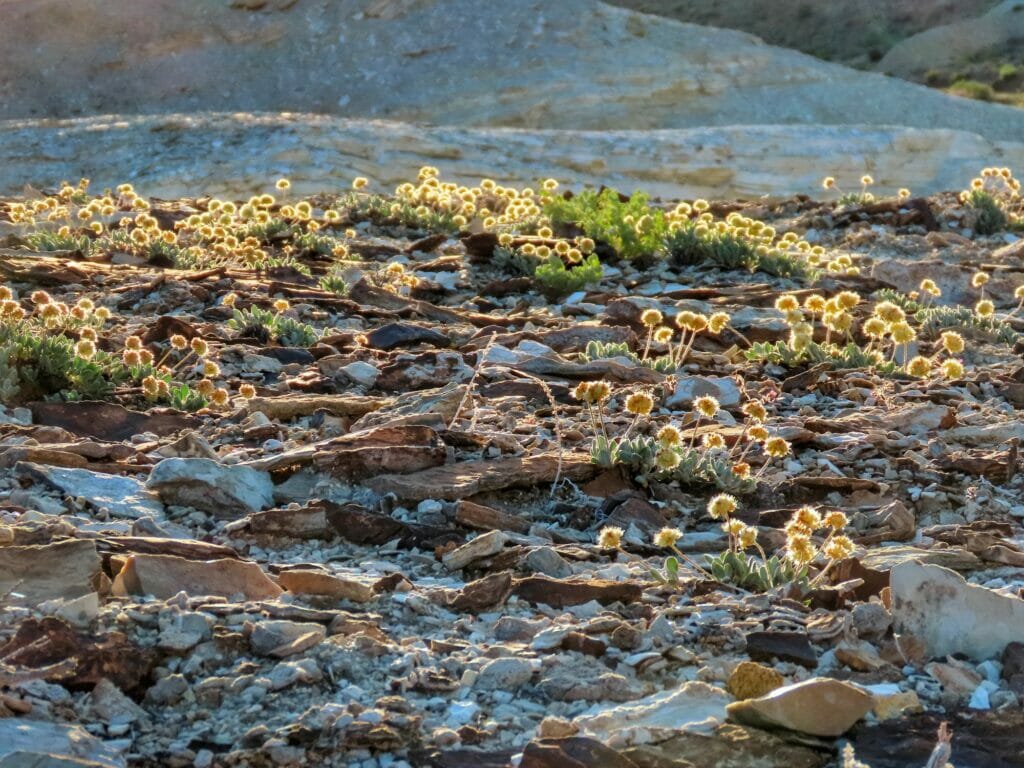'Everything all at once, yesterday:' Takeaways from a Colorado River gathering

Good morning, and welcome to (a Friday edition) of the Indy Environment newsletter.
As always, we want to hear from readers. Let us know what you’re seeing on the ground and how policies are affecting you. Email me with any tips or suggestions at [email protected]
To get this newsletter in your inbox, subscribe here.
“Everything all at once, yesterday.” That’s how a federal water manager described dealing with the Colorado River at a conference of water users in Las Vegas this week. The river faces a crisis fueled by overuse and amplified by climate change — and as Wayne Pullan, the upper Colorado River regional director for the U.S. Bureau of Reclamation stated, officials are taking an all-hands approach.
"We joke within the region that we're going to change our slogan" to the Latin phrase for "everything all at once, yesterday," Pullan said during a meeting Wednesday.
The conference comes on the precipice of action as federal water managers with the bureau continue to push Colorado River users to cut back and put forward a set of consensus-based policies to start stabilizing the river’s quickly declining storage reservoirs in a matter of months.
At stake is water used by about 40 million Americans in seven Western states, from Wyoming to California, 30 Native American tribes and Mexico. Lake Mead, the country’s largest reservoir, is 28 percent full. Lake Powell, upstream, is 24 percent full. The low reservoirs give states that tap into the river little room to negotiate, and there are few options left other than significant cuts.
Earlier this year, the federal government, which operates infrastructure across the watershed, called on the seven states to cut massive amounts of water to stabilize Lake Mead and Lake Powell. In addition, the federal government is seeking comments from the states, tribal nations and the public about new operational policies for managing the reservoirs in the coming years.
Those comments are due Dec. 20. But the states will have another month — until the end of January — to negotiate a consensus-based solution that federal officials said they will weigh before taking unilateral action. In the absence of a consensus set of policies, David Palumbo, the bureau’s deputy commissioner, said the agency is also preparing a federal alternative.
He emphasized the effects of climate change reducing the amount of water running off into the river from snowpack, urging water users to think of new tools to address long-term aridification.
“We can't rely on what we've done in the past to be adequate for the future,” he said.
In an interview, John Entsminger, the general manager of the Southern Nevada Water Authority and the state’s negotiator, said Colorado River states, which have had side meetings this week, are “still fairly far away from coming to consensus, but we're closer than we were on Monday.”
The Las Vegas metro area, which gets about 90 percent of its water from the Colorado River, has prepared for low-water levels at Lake Mead for decades, implementing aggressive urban conservation measures, recycling and an intake to get water from the bottom of Lake Mead.
When asked if Nevada could be facing further cutbacks, Entsminger said past efforts should be considered but he added that the state is “certainly willing to be part of the solution.” What such a solution looks like, even if a framework for cuts is agreed upon, remains an open question.
The monumental task of what comes next: Governance of the Colorado River is diffuse, with power and water distributed differently among states, Native American tribes, irrigation districts and cities. For nearly two decades, the states have worked to cut back on their water use. Over that time, in a series of incremental deals, water users agreed to cut about 1.3 million acre-feet (one acre-foot of water is about enough water to fill a football field to a depth of one foot).
Now the states need to cut about two to four million acre-feet — and they are being asked to do so in a matter of months, not decades. Much of those cuts will fall on water users downstream of Lake Mead. Of the states drawing on Lake Mead, Arizona and California account for the bulk of that use. The two states are wrestling with how to divide cuts among each other and among water users in each state, given a century of legal agreements about how to share shortages.
Still, they are starting to make some progress toward cuts. The three states that draw on Lake Mead submitted 32 proposals to receive federal compensation for conserving water, according to Rebecca Mitchell, the director of the Colorado Water Conservation Board. But it’s likely that more painful cuts are going to be made, and some users will have to make hard choices. And states above Lake Mead, including Colorado, are also looking at compensated conservation.
“We have to accept the situation that we are in and we need to reduce demands,” she said. “All of us — every sector, every state, every water user… We have to accept that we cannot cling to our entitlements or allocations. If they are not there, none of that matters. It does not matter.”

Hydrology is dictating the agenda: For years, a motivator for the states to cut water use was the threat and uncertainty of federal intervention. That is still on the table. But in many ways, the physical hydrology of Lake Mead and Lake Powell are also dictating the timeline for action. With another winter of low runoff — the amount of water moving from snowpack into the river — both reservoirs soon risk falling to trigger elevations that would threaten water and power supplies.
In other words, if the reservoirs continue to drop, the cuts will be physical realities.
“Hydrology will dictate more than policy,” said Chuck Cullom, director of the Upper Colorado River Commission, urging water users to take real action that results in lowering demands.
“And the alternative to inaction is brutal and entirely obvious,” he added.
But after years of discussing the issue, the time to act is running out.
“It took us five years to negotiate a five-year [drought plan],” Entsminger said during a panel Thursday. “And we don’t have five months to come up with an operation plan for 2023 and 2024. So it’s past time. I can look at all six microphones up here and dozens of people across this room, and I can give your well-worn talking points. It's time to set it aside and get real.”
This is a climate change story: Even without climate change, the Colorado River would likely be facing a shortage. It has long been known that the Colorado River is overallocated — there are more rights to water on paper than there is actual water in the river, at least in many years.
But climate change has undoubtedly amplified the problem.
At a meeting on Wednesday, Anne Castle, the U.S. Commissioner at the Upper Colorado River Commission, said the “real enemy” is not another state or economic sector. It is climate change.
Over the last two decades, far less water has entered the river, further worsening the imbalance between water supply and demand. Even in years with near average precipitation, the Colorado River has seen below average runoff, attributed in part to dry conditions and poor soil moisture.
Like with so many issues related to climate change, addressing the problem is forcing officials to grapple with injustices and inequalities embedded in the systems governing the Colorado River. The founding documents for the river’s governance largely ignore the rights of Native American tribes and the ecosystems that sustain wildlife and plants throughout the Colorado River Basin.
In looking at the climate-caused crisis on the Colorado River and a world with less water to go around, water officials are beginning to grapple with some of these longstanding injustices.
Native American tribes hold the rights to roughly 20 percent of the Colorado River, but they have been excluded from past decisions about water use. That has started to change. On Thursday, top federal water officials held meetings with tribal leaders from across the Colorado River.
“We all have our own individual issues when it comes to water,” said Timothy Williams, chairman of the Fort Mojave Indian Tribe, whose reservation extends to Arizona, Nevada and California.
“I think it’s coming to a head. At some point, there’s decisions that are going to be made,” he said on Thursday. “We just want to make sure that we’re part of the decision-making process.”
Here’s what else I’m watching this week:
Large winter storm boosts snowpack across the state: A major storm ripped across Nevada over the weekend and continued into the week. As of Thursday, snowpack in every water basin that is monitored was above 150 percent, a positive start to the season. On Wednesday, I talked briefly with Dan McEvoy, a researcher with the Western Regional Climate Center, about the size and scope of the winter storm, the ongoing drought and what it means for the overall season.
“One characteristic of this year, so far, is that it's actually been pretty cold, which feels unusual for what we've seen over the last few years and [the last] couple of decades,” McEvoy said.
The big picture is that “we're in good shape right now” but there’s a long way to go. Last year, for instance, saw big winter storms in December, with very little precipitation until April. While a dry spell of that long is not expected, it’s hard to predict what the rest of the winter will look like.
As for the drought, McEvoy said it would take several more big storms to alleviate some of the conditions across the state after three-years of consecutive drought has drawn down reservoirs.
Federal wildlife regulators list Tiehm’s buckwheat as an endangered plant: Officials with the U.S. Fish and Wildlife Service announced the action on Wednesday and said the agency was designating 910 acres of land as critical habitat in Esmeralda County. The decision came after conservationists and plant biologists, for more than three years, pushed state and federal regulators to protect the endemic buckwheat, which is threatened by a proposed lithium-boron mine, known as the Rhyolite Ridge project. In a media release, the agency said threats to the species included mining, road development, grazing, invasive plants and climate change.
“Habitat loss is pushing more and more limited-range species like Tiehm’s buckwheat to the brink of extinction,” Martha Williams, the agency’s director, said in a statement. “We look forward to working with our partners on this conservation effort to protect this rare plant and habitat.”
Ioneer, the Australian-based company developing the mine, said in a statement that it expected and welcomed the decision to list the plant species, whose only known habitat sits atop the ore that the mine hopes to extract. In the statement Wednesday, Bernard Rowe, Ioneer’s managing director, said the project is “committed to the protection and conservation of the species,” adding that its “operations have and will continue to avoid all Tiehm’s buckwheat populations.”
The Center for Biological Diversity, a conservation group that pushed to petition the buckwheat as endangered, said Ioneer’s mining plan would functionally create an “island” around about 75 percent of the plant population, and that “Ioneer falsely claims this will conserve the buckwheat.”
“Ioneer’s ‘Buckwheat Island’ scenario would spell doom for this sensitive little flower,” Patrick Donnelly, the group’s Great Basin director, said in the statement, vowing to use the power of the Endangered Species Act “to ensure Ioneer doesn’t harm one hair on a buckwheat’s head.”

With the listing of an endangered toad, Ormat is looking at a smaller project in Dixie Valley. Paul Thomsen, the company’s vice president of business development told The Nevada Current that “Ormat has sought approval of a smaller project authorization that would provide additional assurance that the species will not be jeopardized by geothermal development.”
Climate change is fueling extreme wildlife behavior and making “good fire” more risky, but it is necessary to sustain ecosystems. KUNR’s Shelby Herbert and Climate Central’s Molly Peterson published an important, in-depth look at a push to return good fire and cultural burning to the Pine Nut Mountains in western Nevada on Washoe tribal lands. “The Washoe People would like to treat the land with fire to prevent environmental disasters like these — but they can’t,” they reported. “The tribe hasn’t been able to set a fire for at least a decade.”
“We need to look at the fundamentals of how we’re growing plants in the first place.” This is an excellent, in-depth piece from the Reno Gazette Journal’s Amy Alonzo on regenerative ag.
- A fascinating Western water story from NPR’s Dan Charles. How leadership change at one of the country’s most powerful water districts underlines tensions over drought.
Something to watch: Chevron (yes, that Chevron) is forming a joint-venture with a Swedish investment firm to develop a geothermal project in Esmeralda County, which is an epicenter of the state’s lithium rush. From a recent Reuters story: “The two companies have identified the first project in Weepah Hills, Nevada and will pursue development opportunities in Esmeralda County where previous geothermal research and advanced exploration already exist.”
House passes defense bill with Fallon base expansion. For years, the U.S. Navy has been looking to significantly expand its footprint at the Fallon Naval Air Station. But doing so required the Pentagon to withdraw hundreds of thousands of acres for public land used for a variety of purposes, ranging from habitat conservation, grazing, mining and energy development. Last week, the Nevada congressional delegation announced a compromise base expansion that came out of months of negotiations. Our Washington reporter Gabby Birenbaum has more.
NV Energy is proposing natural gas, geothermal and batteries in a recent filing with utility regulators. On Nov. 30, the state’s largest energy provider filed a new request with state utility regulators seeking permission to add to its energy generation base. The rationale, according to NV Energy President and CEO Doug Cannon: “Over the past three summers, the historic energy supply for Nevada has been challenged and has seen increased risk of summer energy shortages due to increased competition for energy across the west, primarily due to energy shortfalls in California.” I’ll be writing more about the utility’s proposal in the new year, as it goes through the regulatory process. Here’s the breakdown of what the utility’s request looks like:
- 440 megawatts natural gas-fired turbines for when power demand spikes (the turbines, the utility noted, could run on hydrogen as the grid transitions to non-carbon sources).
- 200-megawatts of battery storage.
- 120-megawatts of geothermal energy, supplied by Ormat.
- 20-megawatts of enhanced geothermal energy, supplied by Eavor.
Federal land managers are looking at grazing rules on public land, E&E News reports.
Gov-elect Joe Lombardo announces his transition team for natural resource issues: The agriculture and ranching working committee is being chaired by Eureka County Commissioner and interim state veterinarian J.J. Goicoechea. The energy working committee is being chaired by Southwest Gas president and CEO Karen Haller. Lincoln County Commissioner Mike Reese is chairing the environment, land and wildlife working committee. David Goldwater, a lobbyist with Pinyon Public Affairs and a former state legislator, is leading the mining working committee. Finally, Southern Nevada Water Authority chief John Entsminger is leading the water committee.
Nevada Gold Mines is breaking ground on a 200 megawatt solar facility next to its coal-fired TS power plant, Barrick announced on Wednesday, as an effort to reduce its carbon output.
The U.S. Bureau of Reclamation is starting construction work to line the Truckee Canal.
